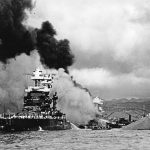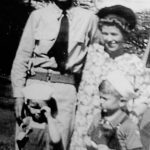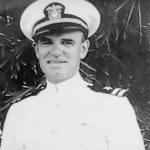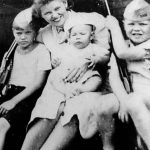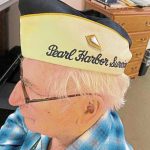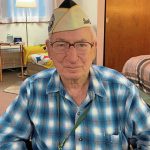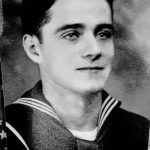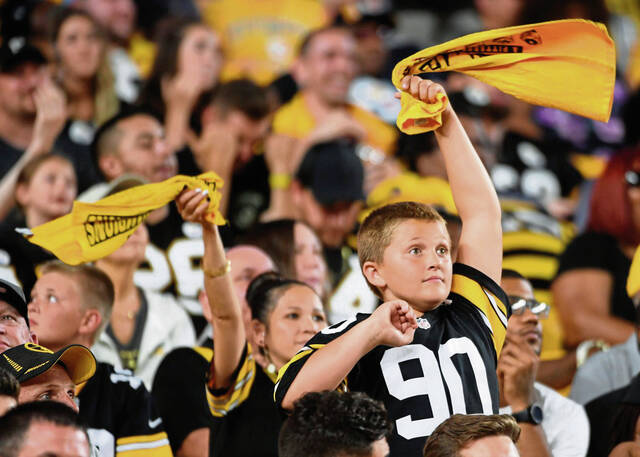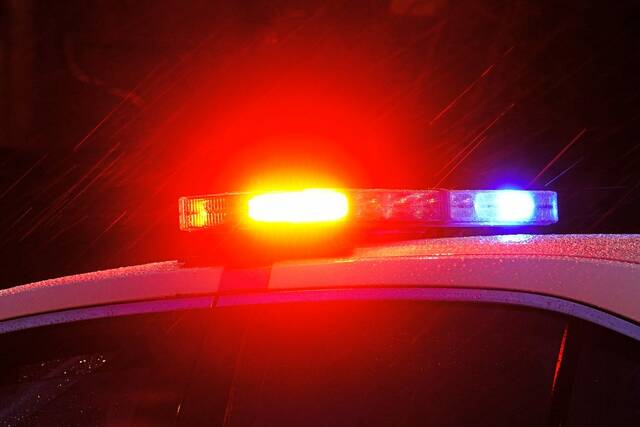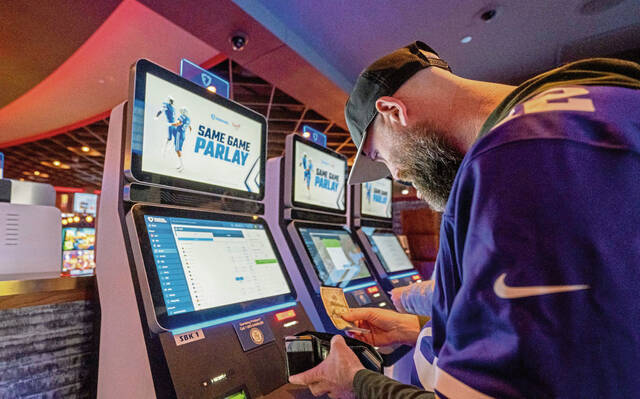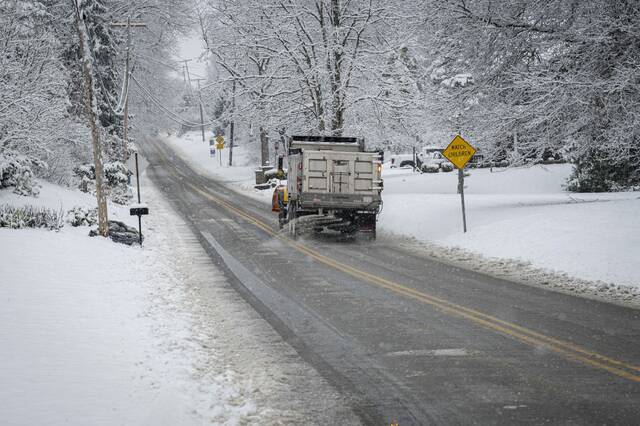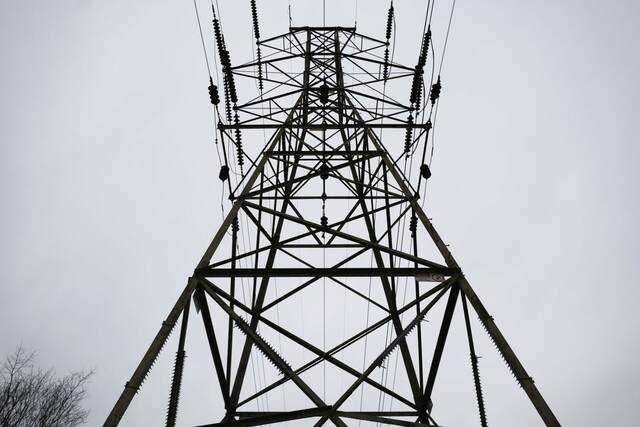Eighty years ago today, at 7:55 a.m. Pacific Time, the Imperial Japanese Navy Air Service attacked the U.S. naval base at Pearl Harbor in Honolulu. The sneak attack killed 2,403 Americans, and 1,178 others were wounded. A total of 188 U.S. aircraft were destroyed.
Only the 9/11 attacks have surpassed the amount of death and destruction that occurred in that strike against the United States.
The events of Dec. 7, 1941, pulled the U.S. into World War II and ignited a call to action. The next day, more than 1,200 young men in Pittsburgh volunteered to serve in the armed services.
Women joined as well and performed key roles that contributed to the U.S. and its allies winning the war. Here are the stories of area veterans whose lives were profoundly impacted by the day that will “live in infamy.”
A 99-year-old survivor
George Pann, 99, of Saxonburg was an Army private assigned to the 55th Coast Artillery, Battery E, stationed on the northeast coast of Oahu.
Pann, formerly of Harrison, said after all of the years since the attack on Pearl Harbor, he feels lucky to be a survivor.
He is the only living military survivor of the attack in the Alle-Kiski Valley, according to veteran groups.
“The Japanese were trying to do as much damage as possible so they could get a good start on World War II,” he said.
Another Alle-Kiski resident in Oahu was George G. Leslie, 20, a private from Arnold. Leslie was killed by Japanese bombers. He was the first Pennsylvania serviceman listed as killed in action the day of the attack.
“You think of things like that every once in awhile, and it kinda gets you,” Pann said.
He was eating breakfast in the barracks and heard a commotion, then a radio report, then an order for his artillery battery to head north to meet the Japanese attack.
By the time he and the other troops set up, the Japanese were returning to their carriers, Pann said.
But they were dropping bombs along the way.
“We were there to protect the people,” Pann said.
“Residents should have great pride for the American soldier,” he said.
Magnolia Place of Saxonburg, where Pann lives, will celebrate’s Pann’s service with coffee and donuts today.
“We will thank George for his sacrifices and generally love on George that day,” said Amie Feeney, director of hospitality at the senior home.
A call to action
Like many Americans, when 19-year-old Pittsburgh native George Herwig heard Pearl Harbor had been bombed, he wasn’t sure where Pearl Harbor was.
“I had to look it up on a map to find it was in Hawaii,” he said. “I figured that’s a long way off and that’s not going to bother me too much.”
Herwig, who grew up in Oakland about 10 blocks from the University of Pittsburgh campus, joined the U.S. Coast Guard the previous month but hadn’t been activated. That changed the day after Pearl Harbor was attacked. Herwig, who was living with his parents, received a call the following morning.
“My mother answered the phone. I was probably still in bed,” Herwig said.
It was the Coast Guard calling to say he was to report to Penn Station at 7:30 the next morning. George Herwig’s war service was about to begin.
He eventually was assigned to a small cargo ship that carried ammunition, food and other supplies to soldiers engaged in island fighting in the Pacific. It was dangerous duty.
“We had two torpedoes go under us one night. We were under fire in almost every island we went into,” said Herwig, who manned a .50-caliber machine gun and exchanged fire with the Japanese.
“They thought we were a bigger ship based on the way we looked in the moonlight. There was very little protection. We lost a lot of men, and it’s something you don’t want to remember,” he said. “I lost friends. When you have to bury people at sea, it’s not a pleasant thing to do. It was a long time before I even talked about any of this with my wife.”
In all, Herwig spent three years in the Pacific. When he returned to Pittsburgh, he worked as a bus driver for 30 years, including a long stint with Trailways. Herwig, who turned 99 last month, and his wife, Delores, have been married for 53 years and raised a family in West Mifflin that includes four children, six grandchildren and one great-grandchild.
Eighty years after Pearl Harbor, Herwig looks back on his military service during World War II with pride.
“My time was not in vain. We did our part. We carried a lot of ammunition wherever it was needed, and we helped keep guys alive.”
‘I wanted to do something’
Julia Parsons, a 100-year-old Forest Hills native, had never thought about joining the Navy — or any other branch of the service for that matter — when she was a 20-year-old senior at Carnegie Mellon University (Carnegie Tech at that time). Then Pearl Harbor happened.
“I never thought about joining the Navy through my college career. That never would have even come up,” Parsons said. “(However), the horribleness of that attack was just incredible. I’m sure that it had an effect on me. … I wanted to do something.”
Parsons finished getting her bachelor’s degree in general studies, but at the time the opportunities for an intelligent woman to do “something interesting” to help the war effort were limited. Parsons decided she wanted to be in the Navy, but the Navy was not yet accepting women.
Finally, in 1943, the Navy needed code breakers, which meant bringing aboard sharp minds such as Parsons’ to solve the German Enigma machine, a cipher device used by the Nazis during World War II to protect military communication.
Parsons was sworn in and assigned to an office in Washington.
“They had no training as such. We just learned it on the job. … We were told never to talk about it, and we never did. I never even told my husband what I was doing,” Parsons said.
Eventually, her department managed to break the German submarine code.
“Of course, we couldn’t tell anybody what we did, and that was annoying because everybody just assumed we had a desk job,” she said. “On the contrary, it was a very important job and a very complicated one. I felt I did a pretty good job. ”
A refugee in her own country
On Dec. 7, 1941, Trafford native Mary Rose Clark was in a Hawaii hospital, dangerously close to a miscarriage with her first daughter, Patricia, when suddenly staffers came rushing through notifying everyone that the hospital was being evacuated.
“We eventually realized that it was to make room for all of the injured people from Pearl Harbor,” said Patricia Truver, who would be born less than two months later but more than 4,000 miles away in the Pittsburgh area.
Her father, Louis, a Naval reservist, arrived home hurriedly to alert the family that the United States was under attack. Truver’s two older brothers, still toddlers at the time, somehow managed to ignore their father’s orders to take cover and sneaked out into the yard instead.
“They told me years later that they were waving to the Japanese kamikaze pilots, and some of them were waving back,” said Truver, 79.
Around the middle of December, military officials began loading veterans’ families onto Navy PBY planes bound for California. Mary Rose Clark arrived in San Francisco just two weeks before Christmas, nearly eight months pregnant, with two young boys in tow and no place to stay — essentially a refugee in her own country.
“It was very cold, and they went from hotel to hotel trying to find a room,” Truver said. “They were all taken up with military personnel.”
Finally, her mother explained to one hotel manager that she was late in her pregnancy and had just arrived from Pearl Harbor.
“She said the man could hardly believe it,” Truver said. “He cleared out a utility closet, laid some mattresses down and brought them some food. The next day, he drove them to the rail station and put them on a train to Pittsburgh.”
Truver’s mother grew up in Trafford, where the family eventually returned. And, on Feb. 4, 1942, Truver was born at Sewickley Valley Hospital with the help of her aunt, a nurse who eventually joined the Army during World War II and served with medical personnel in England.
Truver, whose family moved to Illinois shortly thereafter, said she can remember the day her father came home, even though she was only 4 years old.
“When I was older, I often asked my dad why he never wanted to go back and see Hawaii,” said Truver, who today lives in Hayward, Wis. “He said he could never go back to Hawaii.”
Louis Clark was 31 when Pearl Harbor was attacked.
“He said he was pulling young boys out of the burning water,” Truver said. “He told me, ‘They were calling for their mothers, and I can never get that out of my head.’ ”
Paul Guggenheimer, Patrick Varine and Mary Ann Thomas are Tribune-Review staff writers. Contact Paul at 724-226-7706 or pguggenheimer@triblive.com. Contact Patrick at 724-850-2862, pvarine@triblive.com or via Twitter @MurrysvilleStar. Contact Mary Ann at 724-226-4691, mthomas@triblive.com or via Twitter @MaThomas_Trib.









